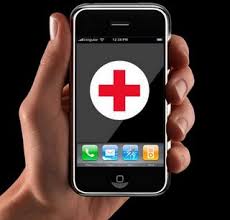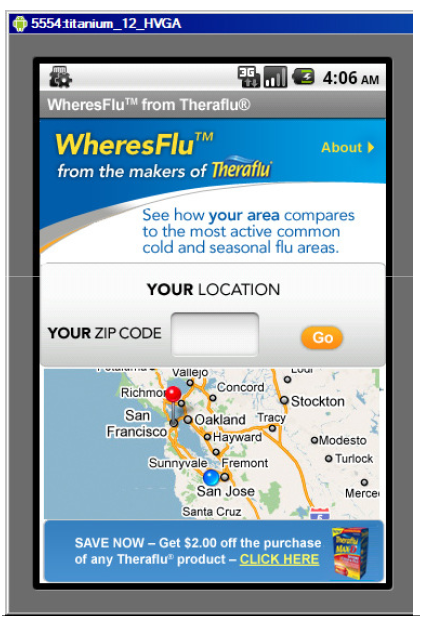December 17th, 2011 by Felasfa Wodajo, M.D. in News
No Comments »


One of the major announcements at last week’s mHealth Summit was made by Qualcomm who introduced a new platform for wirelessly connecting medical devices. The 2net platform abstracts away the details of connecting a sensor to a cloud-based server.
Right now, if a company develops a great lightweight sensor to measure, say, walking speed, it will also have to engineer a way for that information to be transferred wirelessly, sometimes across a couple of stops, to its eventual destination somewhere on a server. Although these same challenges repeat for every device, each company has to “reinvent the wheel”.
Additionally, once it arrives at the company’s servers that rich collection of data would still be isolated – in a “data silo”. If another company comes along with a terrific heart rate sensor and suggests, “why don’t we combine the two data streams and make a useful new app”, not only would they have to recreate the entire chain of communication for themselves, the two companies would have to agree to methods for their two servers to talk and share information.
2Net makes almost all of the above problems Read more »
*This blog post was originally published at iMedicalApps*
October 14th, 2011 by Jessie Gruman, Ph.D. in Opinion
1 Comment »

 There is excitement in the air about how mobile phones are the breakthrough technology for changing health behavior. Last Saturday, I was convinced this must be true. In two short hours, I:
There is excitement in the air about how mobile phones are the breakthrough technology for changing health behavior. Last Saturday, I was convinced this must be true. In two short hours, I:
*This blog post was originally published at Prepared Patient Forum: What It Takes Blog*
February 27th, 2011 by Bryan Vartabedian, M.D. in Better Health Network, Opinion
No Comments »

 This is something. Jay Parkinson on the Future Well blog has suggested that health apps are overrated. Then on Twitter came a remark that the post represented “fightin’ words.” While I think the tweet was in jest, I’m sure there are some who will take offense to the less-than-flattering remarks about our coveted health apps.
This is something. Jay Parkinson on the Future Well blog has suggested that health apps are overrated. Then on Twitter came a remark that the post represented “fightin’ words.” While I think the tweet was in jest, I’m sure there are some who will take offense to the less-than-flattering remarks about our coveted health apps.
We love the concept of health apps for what they represent more than for what they really offer us. We want to feel that we’ve got it all in the palm of our hand. After all, technology might do for us what we won’t do for ourselves.
Like Jay I’m underwhelmed, but I don’t think that’ll always be the case. The post’s criticism should start a conversation about what’s real in mobile health and what isn’t. Even the fantasy of Health 2.0 has been questioned, and that’s a good thing. This dialog about reality versus rainbows and unicorns needs to continue.
Youngme Moon in Different: Escaping the Competitive Herd wrote, “The way to keep criticism from devolving into cynicism is to make it a starting point rather than a punctuation mark.” Jay Parkinson’s post is a starting point.
*This blog post was originally published at 33 Charts*
February 25th, 2011 by Medgadget in Better Health Network, Health Tips
No Comments »

 Getting around a city can be hard when you’re in a wheelchair because some places simply aren’t designed for wheels. Wheelmap is an iPhone app for wheelchair users which tells you about the accessibility of nearby restaurants, cafes, clubs, museums, and other locations.
Getting around a city can be hard when you’re in a wheelchair because some places simply aren’t designed for wheels. Wheelmap is an iPhone app for wheelchair users which tells you about the accessibility of nearby restaurants, cafes, clubs, museums, and other locations.
Locations are color-coded on a map to show how accessible they are. The current location, but also any place around the world, can be viewed. Maps are based on OpenStreetMap data, and accessibility data about locations can be modified and sent back to the servers by users from within the app. There is also a corresponding website showing the same information online.
As with any other crowd-sourced initiative, success depends on the number of contributors, but we have good hopes for this one to succeed. Because the app was created by a German, coverage is most extensive in Germany, particularly Berlin, but other large cities worldwide are starting to catch up.
More from AP: German iPhone app guides handicapped around cities…
iTunes link: Wheelmap…
Homepage: Wheelmap…
*This blog post was originally published at Medgadget*
February 18th, 2011 by Berci in Better Health Network, Health Tips
No Comments »

As a part of the TheraFlu campaign, Novartis has developed free Android, Blackberry and iPhone applications for tracking flu outbreaks in the U.S. These days it’s become inevitable to develop free apps on all platforms in order to promote your product. From Novartis:
 Keep up-to-date on the most active cold and flu reports around the country. The WheresFlu™ app follows sickness incidence levels from week to week and keeps track of the current top 5 affected cities in the nation. The WheresFlu™ app will find your current location and provide you with results for that area. Or you can enter a ZIP code to get information for that area.
Keep up-to-date on the most active cold and flu reports around the country. The WheresFlu™ app follows sickness incidence levels from week to week and keeps track of the current top 5 affected cities in the nation. The WheresFlu™ app will find your current location and provide you with results for that area. Or you can enter a ZIP code to get information for that area.
If you’re wondering how it actually works and how it differs from Google Flu Trends, here it is:
WheresFlu™ measures weekly activity for cold and flu based upon real-time reports of symptoms from SDI FAN® (a source used by the Centers for Disease Control and Prevention). As the longest-running respiratory tracking program in the US, SDI FAN® covers illness levels in 135 regions across the country utilizing panel-member reporting along with patient-specific data. Advanced tracking uses illness status levels to predict change in the affected population for the nine US Census Regions.
*This blog post was originally published at ScienceRoll*





 There is excitement in the air about how mobile phones are the breakthrough technology for changing health behavior. Last Saturday, I was convinced this must be true. In two short hours, I:
There is excitement in the air about how mobile phones are the breakthrough technology for changing health behavior. Last Saturday, I was convinced this must be true. In two short hours, I:

 Getting around a city can be hard when you’re in a wheelchair because some places simply aren’t designed for wheels. Wheelmap is an iPhone app for wheelchair users which tells you about the accessibility of nearby restaurants, cafes, clubs, museums, and other locations.
Getting around a city can be hard when you’re in a wheelchair because some places simply aren’t designed for wheels. Wheelmap is an iPhone app for wheelchair users which tells you about the accessibility of nearby restaurants, cafes, clubs, museums, and other locations.
 Keep up-to-date on the most active cold and flu reports around the country. The WheresFlu™ app follows sickness incidence levels from week to week and keeps track of the current top 5 affected cities in the nation. The WheresFlu™ app will find your current location and provide you with results for that area. Or you can enter a ZIP code to get information for that area.
Keep up-to-date on the most active cold and flu reports around the country. The WheresFlu™ app follows sickness incidence levels from week to week and keeps track of the current top 5 affected cities in the nation. The WheresFlu™ app will find your current location and provide you with results for that area. Or you can enter a ZIP code to get information for that area.







